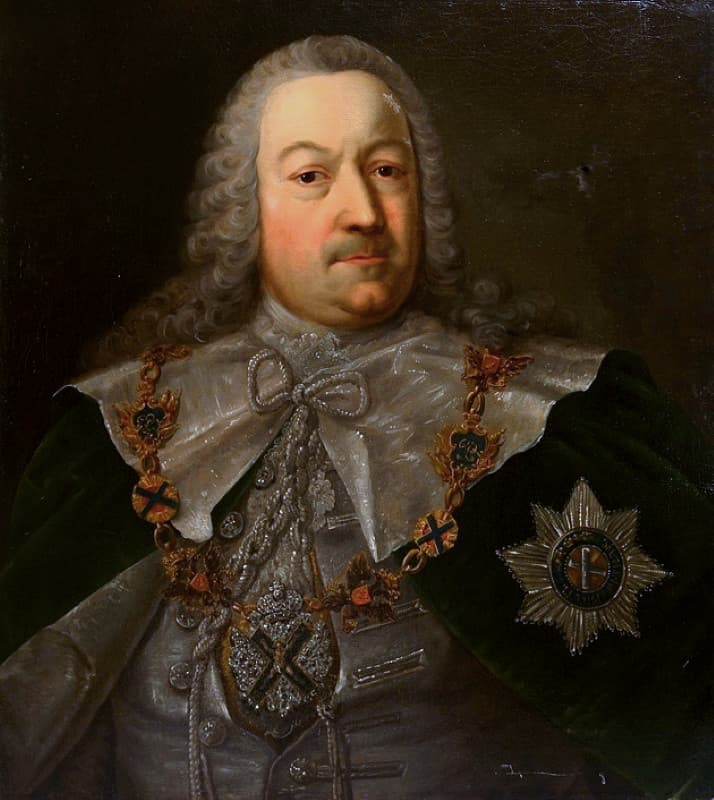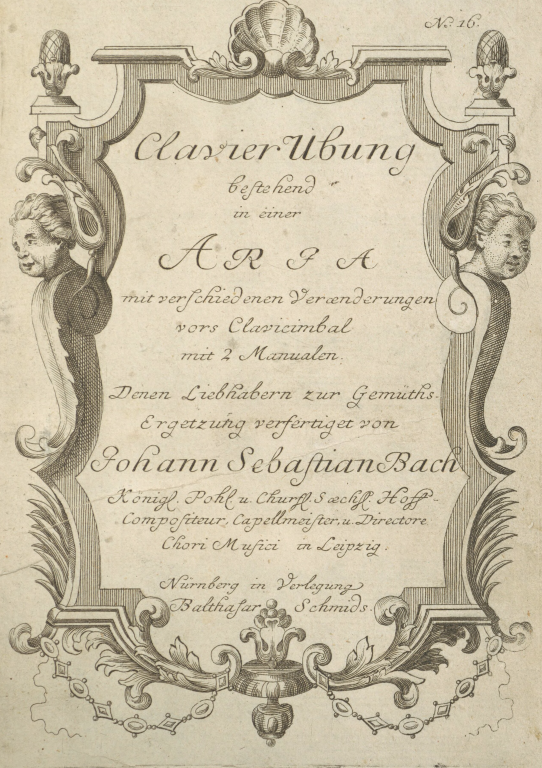by Maureen Buja, Interlude

Herman Karl von Keyserlingk
Count Keyserlingk discovered the extremely talented Goldberg when the boy was only age 10 and sponsored him to study with both Johann Sebastian Bach and his oldest son, Wilhelm Friedmann. According to Forkel, writing in 1802, ‘Count Keyserlingk was often ill and suffered from nights of insomnia. During such periods, Goldberg, who lived in his house, had to spend the nights in the next room to play for him. Once the Count told Bach that he would like for his Goldberg some harpsichord pieces of such a light and cheerful character that he, Keyserlingk, could be entertained a little during his sleepless nights. Bach thought that he could best fulfil this wish by writing variations…. The Count later called them only “his” variations. He could never get enough of them, and for a long time, whenever sleepless nights came, he always repeated: “Dear Goldberg, play me one of my variations”.’
Bach composed the work with the idea of Goldberg as the performer, but rumours to the contrary aside did not dedicate the work to either Goldberg or Keyserlingk. The Goldberg Variations takes its name from Goldberg as its first performer.
Goldberg was a talented performer from an early age, and after his study with W.F. and J.S. Bach, his own compositions showed their influence. As the young Goldberg took up the new galant style, his compositions also anticipated works by J.S.’s son, C.P.E. Bach. Goldberg died at the age of 29 of tuberculosis and was declared to be a great loss to the Dresden court. Being in close proximity to his teacher, J.S. Bach, who had been appointed ‘Royal Court Composer’ to the Dresden Court in 1736, Goldberg disparaged his own compositions, often tearing them up, but current reassessment of works such as his harpsichord concertos has done much to show him as an outstanding composer, albeit one who died too young.
The Goldberg Variations, as published in the Clavier-Übung IV, noted the quality of the work: ‘Keyboard exercise, consisting of an ARIA with diverse variations for harpsichord with two manuals. Composed for connoisseurs, for the refreshment of their spirits…’.

J.S. Bach: Clavier-Übung IV, 1741, title page
As described on the title page, the work is a variation set, beginning with an original aria composed by Bach and followed by 30 variations. The aria first appears in 1725 in the Clavierbüchlein copied by Bach’s second wife, Anna Magdalena, and opens with a chaconne bass in its first 8 bars.
The variations that follow ‘are derived from the harmonic structure and the bass line of the aria and are grouped in threes, every third variation a canon at a higher numerical interval, with the final variation a quodlibet, a hotch-potch seemingly remote from the original aria, which follows in conclusion’.
When heard on harpsichord, the work has a slightly different feel than the more common modern piano recordings. The softness of the piano is replaced by the more brittle sound of the plucked harpsichord, which may explain why Goldberg was described as playing it from a room separate from that holding the insomniac Count.
We will be looking at the other versions of this work, i.e., the Goldberg in the hands and sounds of other instruments. As a teaser for what will be coming next, here’s the first variation done not by a keyboard instrument but by a vocal group:
SLIXS – “Quer Bach” – Goldberg Variationen, BWV 988, Variation Nr. 1
This performance is by the German group SLIXS, who describe themselves as an ‘a cappella band’, and who bring all sorts of modern styles to our Baroque familiar.